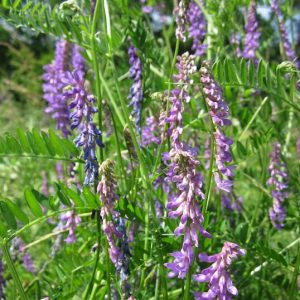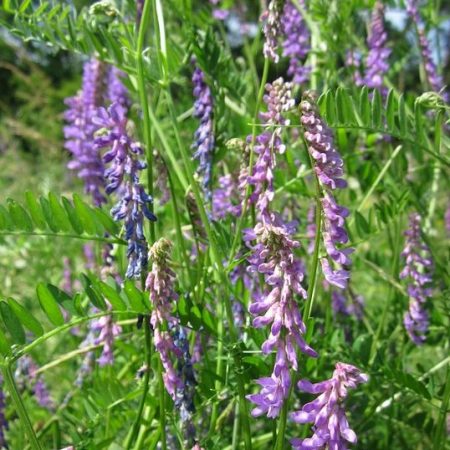When you want to increase the yield of a crop, you have to understand the plants needs. You also have to provide the extra nutrients to replace those removed during harvest particularly the most vital elements for plant development, Nitrogen.
Without sufficient nitrogen, your crops won’t grow
The three numbers you see on the front of bags of fertilizers eg. 4-6-4 represent the percentage of Nitrogen, Potassium and Phosphorous present in the fertilizer. Nitrogen is the main component of chlorophyll. It gives the crop its green color. In addition, if your soil doesn’t provide enough of this element, your crops won’t develop well and will most probably weaken and die. So, you can go out and spend money buying fertilizer or you can plant Nitrogen fixing plants.
How plants fix nitrogen
80% of our air is made up of nitrogen gas, but plant don’t use it directly. However, some types of plants such as legume can absorb nitrogen from the atmosphere. Thus it’s called a nitrogen fixing plant. But, it’s not the plant that provides the fertility but a bacteria that lives within the root nodules of the legume. It only creates a home and sugars for the bacteria to live within its roots in exchange for the nitrogen provided by the bacteria.
As the legumes grow, they release a small amount of this stored nitrogeninto the soil. Most improtantly, when these plants die and decompose, they release all the stored nitrogen in the soil.
The best nitrogen fixing legumes you should plant with your other crops
Cowpea

Cowpeas are easy to grow in Zambia as they are heat tolerant and drought resistant crops. It can develop taproots that allow the plant to get moisture deep down even in poor quality soil. Furthermore, the market for cowpeas is huge as it is also being used for feeding programmes in schools countrywide. You can grow them as intercrops or in rotations on maize-based farming systems. They fix substantial amounts of atmospheric nitrogen through biological nitrogen fixation in the soil, help improve soil fertility and also contribute to improved crop productivity.
Hairy Vetch

Grazing vetch is not commonly grown in Zambia. It is tolerant of cold weather than other vetches and more suited for grazing. It develops quickly and is most adapted to poor and acid soils. Also, it has the potential to reseed itself.
Common vetch is most commonly used for hay and silage too. This vetch produces pods that are commonly grazed by goats. It is sown in January and will provide good fodder late in winter. Most vetch species require between 350 mm – 550 mm rainfall per annum and if managed well, can provide a good quality animal feed in winter months.
Soya Beans (Soy Beans)
 Unlike maize, commercial farmers and some of the emergent farmers grow the bulk of soya beans consumed in Zambia. This vegetable of the pea family is one of the most popular legumes in Zambia. It’s an important source of food and animal feeds. Furthermore, it’s a very versatile plant capable of producing abundant supply of oil and protein. It thrives well in temperate and tropical climates. In addition, its ability to grow even in extremely low quality soil makes it a very valuable grain legume. Soya beans can produce an excellent number of nitrogen nodules in its root enough to sustain its high nitrogen requirement.
Unlike maize, commercial farmers and some of the emergent farmers grow the bulk of soya beans consumed in Zambia. This vegetable of the pea family is one of the most popular legumes in Zambia. It’s an important source of food and animal feeds. Furthermore, it’s a very versatile plant capable of producing abundant supply of oil and protein. It thrives well in temperate and tropical climates. In addition, its ability to grow even in extremely low quality soil makes it a very valuable grain legume. Soya beans can produce an excellent number of nitrogen nodules in its root enough to sustain its high nitrogen requirement.
So, next time you decide to buy a few more bags of compost or fertilizer, think about growing one of the many nitrogen fixing plants.
Happy planting!

[…] To increase the yield of a crop, you have to understand the plants needs. You have to provide the extra nutrients to replace those removed during harvest particularly the most vital elements for plant development, Nitrogen. Lavender is your answer. You could start growing it for this reason while you look for a market. Click here to read more. […]
[…] You might also like: Nitrogen fixing plants you should be planting in your field […]
[…] You might also like: Nitrogen fixing plants you should be planting in your field […]